Attention, radiation. Build Your Intensimeter * Waiting for Doomsday
 One day, the Finance Minister appeared pale on TV as death and declared:
One day, the Finance Minister appeared pale on TV as death and declared: - The financial crisis will not affect us. Because. I tell you exactly.
The population, who knew a lot about the statements of officials, grew softly and went to buy salt, matches and sugar. M.Zhvanetsky
Recently, the topic of the coming Third World War has been popular in American (and not only) media. Some even realize that it will be atomic (a typical example of The United States and Russia ) and happen in the next six months or so. If you have already checked the first-aid kit, bought cereals, soap, salt, matches and sugar, then it’s time to think about such an important attribute of the Doomsday meeting as a dosimeter. The proposed dosimeter circuit is characterized by high sensitivity and ease of manufacture due to the lack of the need to wind up a high voltage transformer. Also, the advantages of the design include the use of widely used parts, and the ability to work from different power sources (I hope everyone remembers how to make batteries from potatoes), so repair and maintenance in a post-apocalyptic world will not be too difficult.
')
* Intensimeter - dosimeter of energy flux density of ionizing particles.
The dosimeter is built on four Geiger-Muller counters (hereinafter referred to as a “tube” or not quite correctly a “meter”) - popular and accessible SBM-20 tubes. When buying should pay attention to the date of manufacture.
The tube is sensitive to y and limited to β , and is not sensitive to α radiation.
Characteristics of SBM-20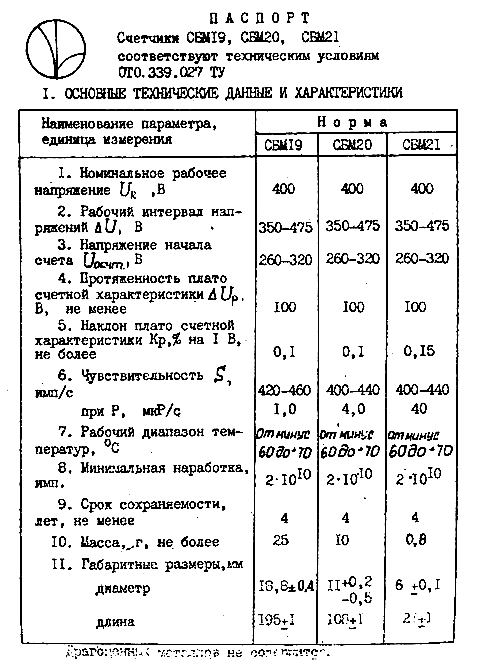

SBM-20 is made in the form of a hermetic thin-walled corrugated metal tube, from which air is evacuated, and inert gas is added instead of it under slight pressure, with the addition of an impurity (Ne + Br 2 + Ar). A thin wire is stretched along the tube axis, and a metal cylinder is placed coaxially with it. Both the tube and the wire are electrodes: the tube is the cathode, and the wire is the anode. A minus is connected to the cathode from a constant voltage source, and to the anode - through a very large constant resistance - plus from a constant voltage source. When a charged particle enters the counter, some amount of gas is ionized, and under the influence of voltage between the cathode and the anode, ions and electrons begin to move — a short-term current occurs in the tube. The voltage at the anode of the tube drops briefly - we get an inverted pulse.
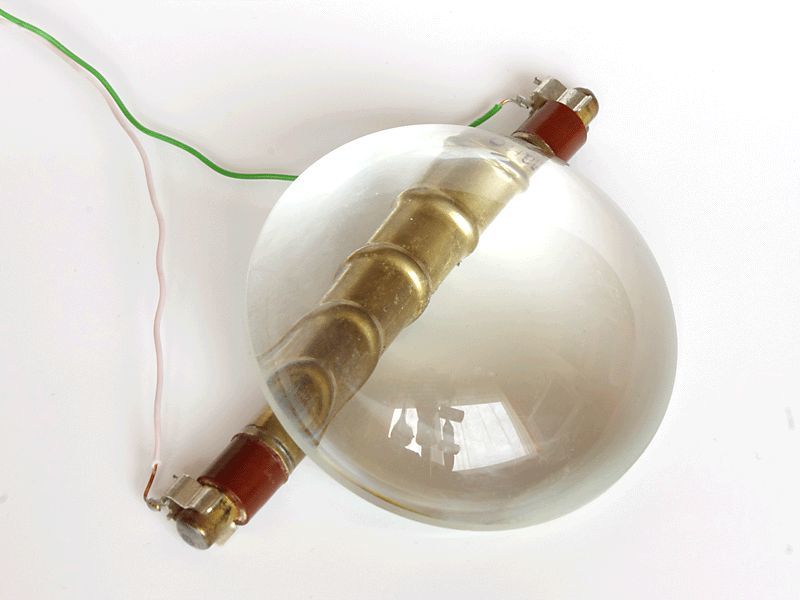
SBM-20 has contacts for grounding connection. In no case do not solder to them . For the connection of SBM-20 flexible contacts are suitable for a printed circuit board, designed for tubular fuses with a diameter of 6.3 mm.
Schemes of old army dosimeters are based primarily on the requirements for equipment resistance to the effects of an electromagnetic pulse from a nearby nuclear explosion, power from common batteries (two coal-zinc or alkaline size D (LR20)). Indication of radioactivity - or sound in headphones or headphones and simultaneously on a microammeter with a scale with multiple ranges and checking the power source. Initially, a vibration voltage converter was used in dosimeters (IBG-58T), and then a generator on a transistor and a ferrite transformer, a lamp — a corona stabilizer — was used to stabilize the voltage.
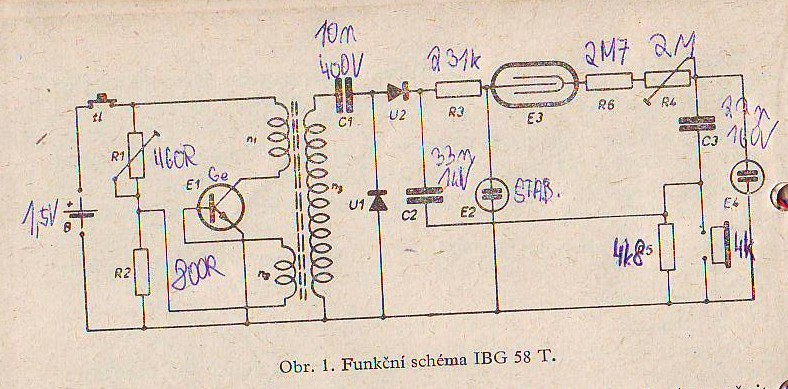
Diagram of the Army Radioactivity Indicator of the Czechoslovak Army IBG-58T
Most Internet circuits are built on a voltage converter using a transformer on a ferrite core, which often stops people who want to make a dosimeter. And the supply voltage is usually increased to 12 volts.
My main requirements for the scheme were:
- in the application of voltages used in circuits with microcontrollers - 5 volts or lower;
- easily accessible inductances or transformers;
- scalability and the ability to use other Geiger-Muller counters by regulating the voltage within at least 200-460 volts;
- consisting of separate functional units connected in series;
- the design can be easily repaired.
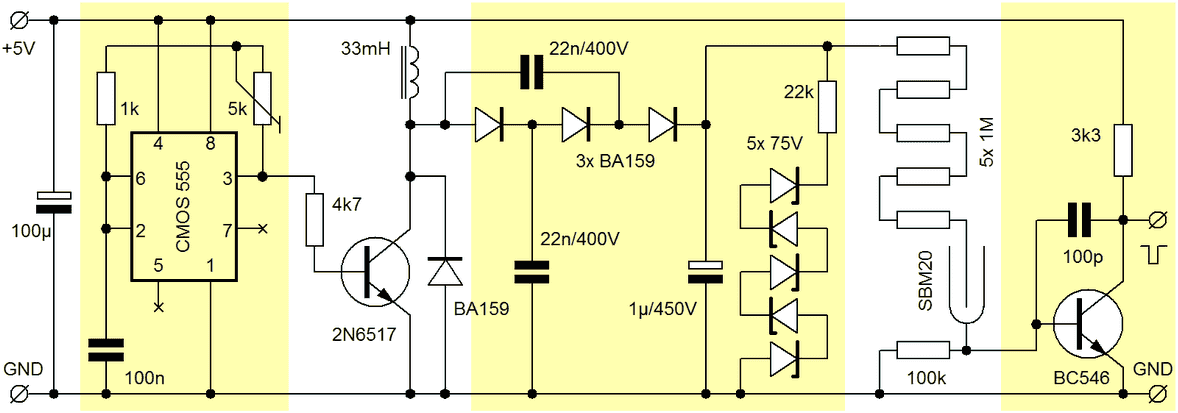
Dosimeter circuit with a logical output to the microcontroller. Functional “blocks” are highlighted in yellow and white.
The first block is an oscillator with a constant frequency of about 1.5 kHz and a duty cycle of about 1: 1. The generator is built on a 555 timer (in the CMOS version - powered from 3 volts). The trimming resistor allows you to adjust the frequency in the range from 1.1 to 5.2 kHz, so it is possible to adjust the voltage stabilization in the widest limits. The default setting is a high resistance of the trimmer, which corresponds to a low generated frequency.
The second block is a step-up converter with a 33 mG miniature choke easily accessible for purchase (Matsutami 09P-333J). At the output of which, to a voltage multiplier, almost 300 volts is obtained. For this reason, a 2N6517 transistor with a maximum voltage (C – E) of 350 volts has been selected. The voltage during operation is shown below in the waveform:

Waveform
The voltage multiplier uses 22n 400V metal-film capacitors. At the output electrolytic capacitor 1 microfarads, the voltage can be 450 volts, if in parallel to connect a chain of Zener diodes BZX83V075 (75V x5), without which the voltage can reach 600 volts and in this case it is necessary to use a 630 volt capacitor. When measuring high voltage, it is necessary to take into account that the new electrolytic capacitor has a higher leakage and must be molded. Within 15 minutes of operation of the new capacitor, the voltage stabilizes.

View assembled device on breadboard
The voltage on the tube is stabilized at 375 volts. This is lower than that recommended by the manufacturer and other instructions for the manufacture of dosimeters, 400 volts. I tried to measure the dependence of the sensitivity of the tube when the voltage changes, and in the range of 330-460 volts, the voltage change does not lead to a significant change in sensitivity, and at about 300 volts there is a slight decrease. The operation of the tube changes dramatically at a voltage of about 270 volts.
The voltage converter is a rather gentle source and the connection of a 10 MΩ voltmeter leads to a noticeable voltage drop. The effect of the voltmeter will be insignificant when its resistance is about 100 MΩ. Such an improvised voltmeter can be made by connecting a 10 MΩ voltmeter through nine (9) resistors connected in series across 10 MΩ. The measured voltage must be multiplied by 10.
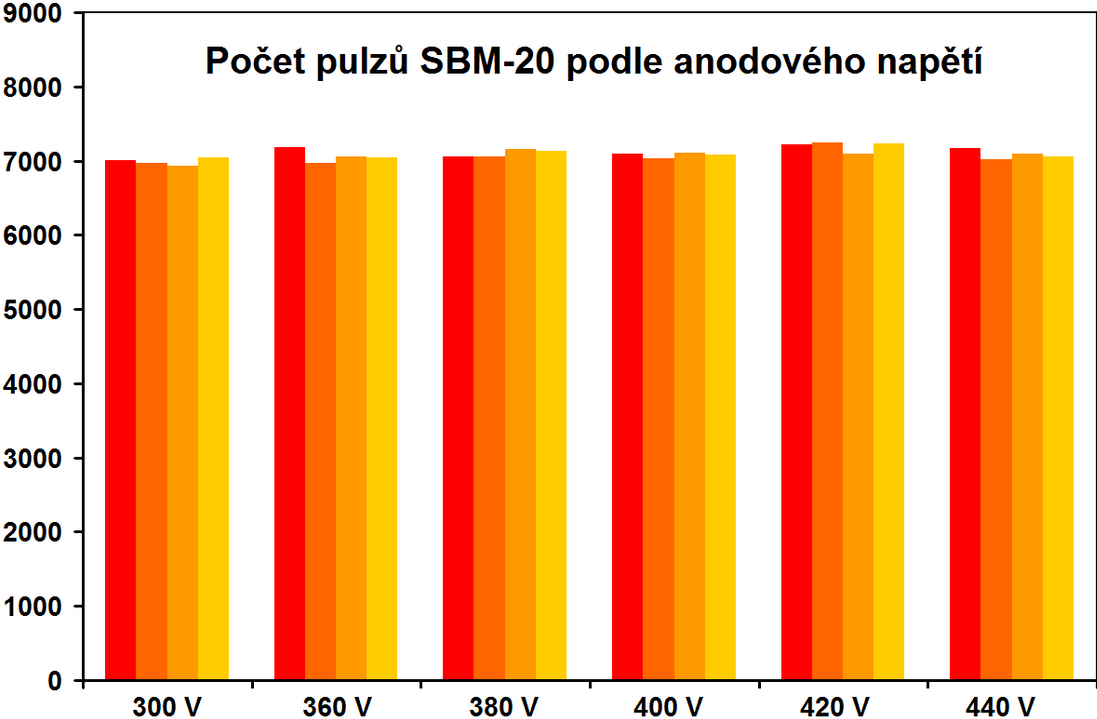
The sensitivity of the SBM-20 at different anode voltage.
The anode resistor of the Geiger counter is composed of five 1 MΩ resistors. A 100kΩ resistor is connected to the cathode circuit of the counter, from which inverted output pulses are removed, and then the transistor is brought to a logic level of 5V. Pulses have a duration of about 250 microseconds. These pulses are processed by the input of the microcontroller ( you can process the smartphone by adding a coupling capacitor - as in the MaxFactor publication “ How to make a dosimeter and attach it to Android ” ).
If the goal is only an indication of the radiation intensity without further processing, then we will install another 555 chip, the duration of the output pulses of which are set by the trimming resistor within 2.5 ms - 25 ms. At low levels of radiation intensity, the flashing LED is much more visible. Also more noticeable than the usual “crackle” is the sound tone of the active speaker (buzzer) KPE222A with a frequency of 3.2 kHz of its own signal.
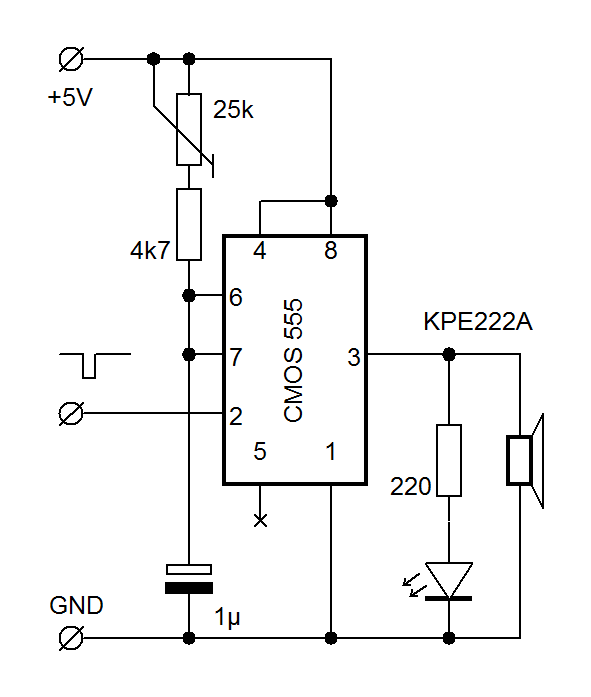
Additional light and sound indication unit.
The voltage on the 375-volt tube is kept constant when the supply voltage varies from 3.8 to 5.5 V. The converter consumption is 12 mA at 5 volts, which does not cause problems to power it from the microcontroller's power supply. As a separate device, the dosimeter can operate from 4 nickel-metal hydride elements, 3 Ni-Zn elements, or from a stabilizer of 5 V from any source with voltage up to 24 V.
When creating the first version of the device on the prototyping board, it turned out that attention should be paid to thoroughly cleaning the board from the flux. For example, the remains of Pro'sKit solder paste caused leakage currents, which reduced the voltage at the output of the voltage converter to 120 volts. Classical rosin is much better, but in this case cleaning the board is appropriate.
If the tube of the Geiger-Muller counter is located far from the board, then you should pay attention to the cable because the characteristics of each are not suitable for 400 volts. I ran into a breakdown on an old coaxial cable, which was reflected in the measurement of pulses. The cable capacitance is also important, the 4pF capacitance at the tube itself and the cable affect the time needed for the tube to recover after the particle has passed and, accordingly, affects the linearity and the upper limit of measurements. It is desirable that the cable had a capacity as small as possible.

Metal housing for Geiger-Muller counter
The tubes can be placed directly on the board or inside the case. They will measure the level of radiation in space, but they are unlikely to study a point source of radiation, and besides, they will lose most of their sensitivity to weak sources of radiation, which strongly depends on the minimum distance from the source to the tube.
For the separation of y and β- radiation, to which the meter is sensitive, an aluminum housing with a diaphragm, as in the previous photo, can be used. y and β pass freely through the slits, and only the u body penetrates through a 5 mm aluminum case. When installed in a case, the tube must be correctly oriented, the case is grounded, the wire is insulated. For our experiments, it is enough to use only a tube with insulated leads.
The assembled and switched on dosimeter registered a background of about 20 pulses per minute. Reliably reacted to a uranium glass bead attached to a tube and even to a glowing wire (Thorium-232) from a distance of 10 cm. Weaker radiation sources like ash or laundry detergent are usually not well recognized by hearing, but are convincingly determined by graphic recording of measurement results . Next, we will connect a sensitive dosimeter with the Arduino and “investigate” the radioactive radiation from household items.
Connection to Arduino
In the near future, our goal will be to complete the creation of a convenient measuring device with a display, with a recalculation of the radiation dose during long-term observation, with a graphic display or control of the preset levels of radiation intensity and alarm signaling when levels are exceeded. In the meantime, we will focus on a simple graphic display. High sensitivity and higher noise filtering will allow us to conduct experiments with weaker sources of radioactive radiation.
And so connect the device's output to the Arduino Uno on the D2 pin. Single pulses are summed in a variable through interrupt processing, and the number of pulses per minute is graphically displayed. To begin with, the experiences of such a program are enough for us. Even a single tube can measure quite accurately, but it will take a long time to measure. You need to spend tens of minutes on cycles and one measurement from several cycles can take several hours. Another way to do the same thing we can observe in devices of mass production - this is done by increasing the number of Geiger-Muller meters connected in parallel, which will increase the number of trapped particles. How to connect multiple tubes shows this diagram:
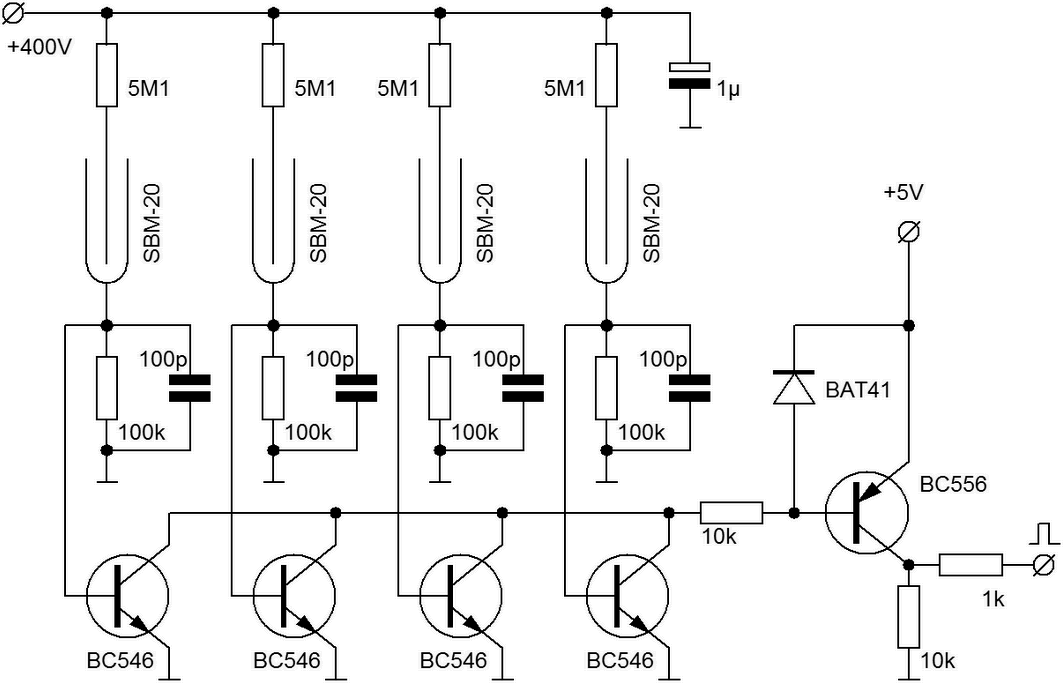
Parallel connection of several tubes
// / int pocet; // unsigned long time; // void setup() { pinMode(2, INPUT); // pin 2 attachInterrupt(0, nacti, RISING); // Serial.begin(9600); // Serial.println(" "); // } void nacti() { pocet = pocet++; // int0 } void loop() { pocet = 0; // time = millis() + 60000; // while (time > millis()) {} // 1 if (pocet < 10) Serial.print(" "); // if (pocet < 100) Serial.print(" "); if (pocet < 1000) Serial.print(" "); Serial.print(pocet); // / Serial.print(" "); for (int i = 0; i < pocet; i++) { // Serial.print("#"); } Serial.println(" "); // } The following figure shows the measurement result of the lens radiation from an old high-power projector. Optical glass compared to uranium glass has a very low activity. During the “audition” some activity was noted, but it was difficult to estimate how great it is.

Optical lens activity measurement
On the record, one pound (#) corresponds to one pulse. The first 20 minutes were recorded radioactive background. The smallest number of registered pulses was 13, the maximum was 36. The red line shows the average value, in this case, 23 pulses per minute.
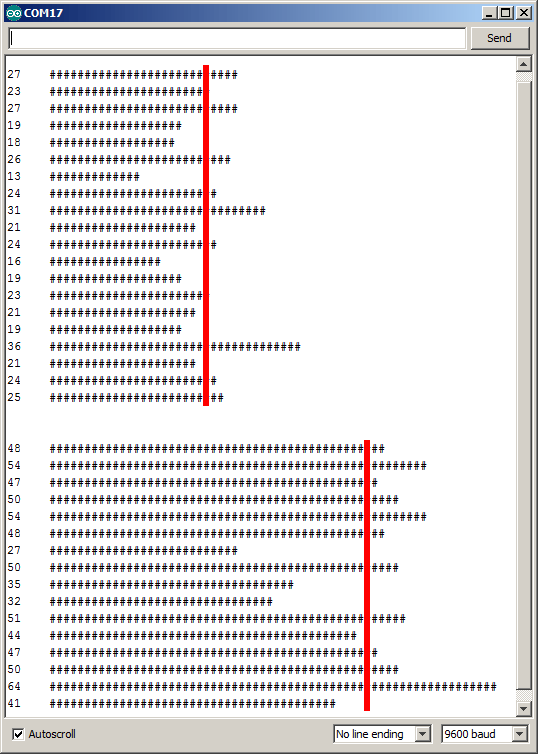
Recording optical lens activity measurement
After 16 minutes of recording with a lens lying on the tube, the average value was 46 pulses per minute. Exactly twice as much. We can conclude that the optical lens contributed 23 pulses per minute, although this result is only approximate and not statistically reliable. We can even try to measure weak radiation sources such as laundry detergent, ash, tropical fruits, metal alloys, magnets or something else. Similarly, we can try to detect the presence of radiation sources at short distances, but perhaps at 10, 30 or 100 cm. A similar result, like the mentioned lens, also provides measurement of the old tachometer at a distance of 0.5 meter or checking old dumps of the mine near Mnishek Pod Brdy
When conducting a measuring cycle for 5 minutes, and conducting 10 cycles without a source (background measurement), and then 10 cycles with a source, it is possible to detect the activity of bananas. Unfortunately, I was not able to determine specifically the origin of bananas, whose activity depends strongly enough on this. The measurement of 100 minutes alone is not significant - an increase in the number of pulses relative to the background is about 20%. And this could be reduced to a statistical error, but when four measurements are taken in a row (two measurements of the background, a source and two measurements in the reverse order) it becomes quite obvious that “there is something there” and we can even appreciate how intense it is. The average contribution of a banana was 4 particles detected per minute, which would correspond to 8 nSv / h . More sensitive and accurate measurements in a reasonable period of time is difficult to achieve.
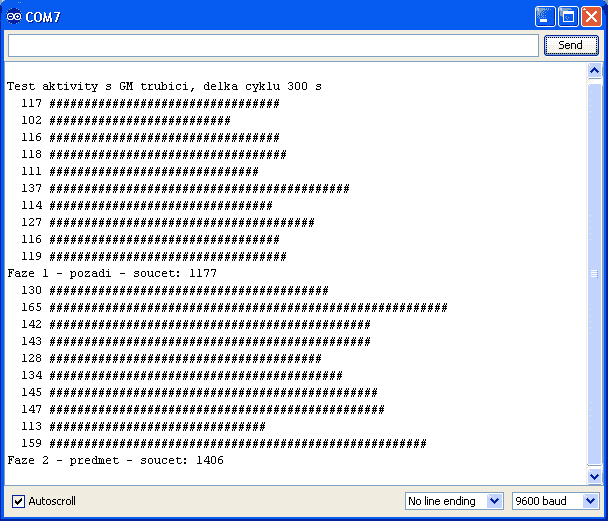
The result of measuring the radioactivity of a banana
Translation publication Pozor, radiace! from Czech. Posted by Michal Černy, June 17, 2016.
PS: You can continue to experiment with photo lenses. some photographic lenses are noticeably radioactive (list).
PPS: “Potassium” radioactivity of food products from the book of Yu.A. Vinogradov. “Ionizing radiation. Detection, control, protection .
table
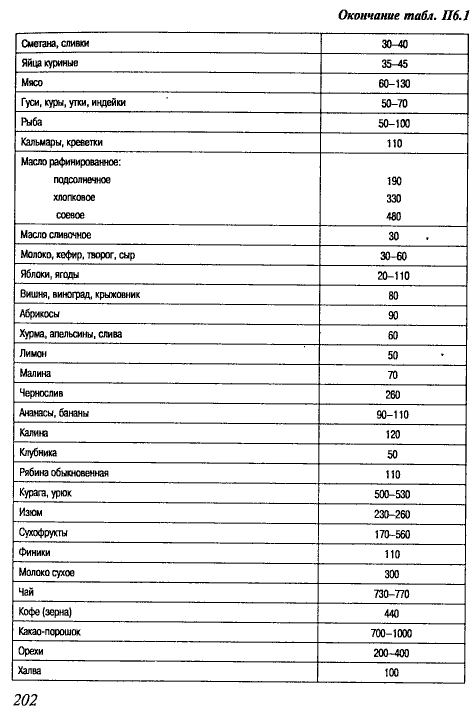



Source: https://habr.com/ru/post/398345/
All Articles